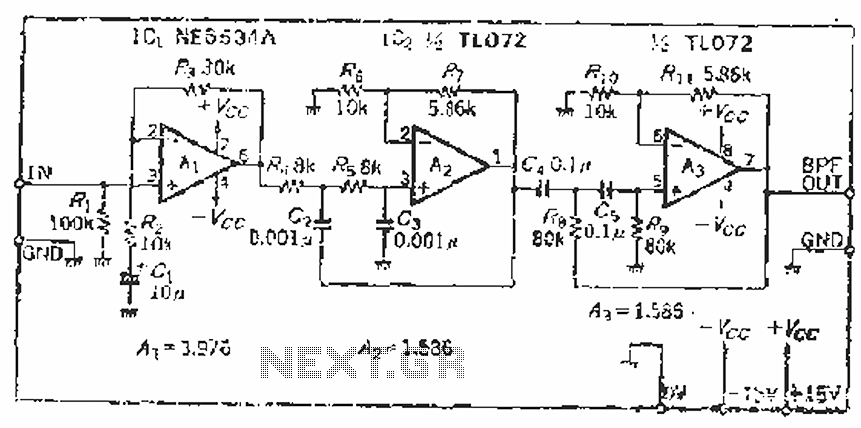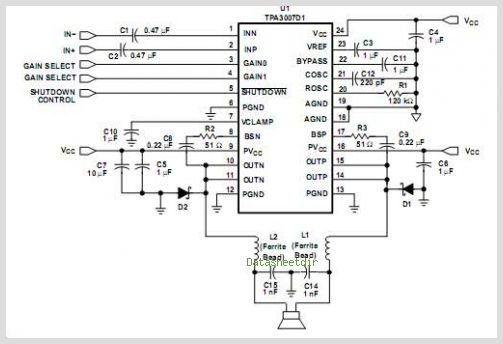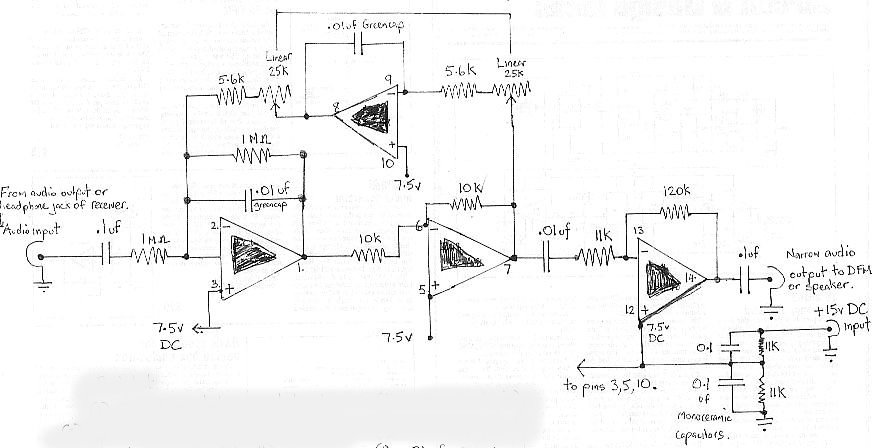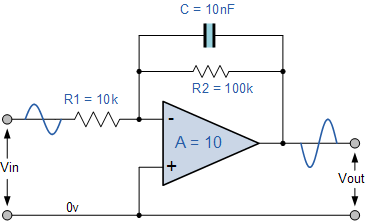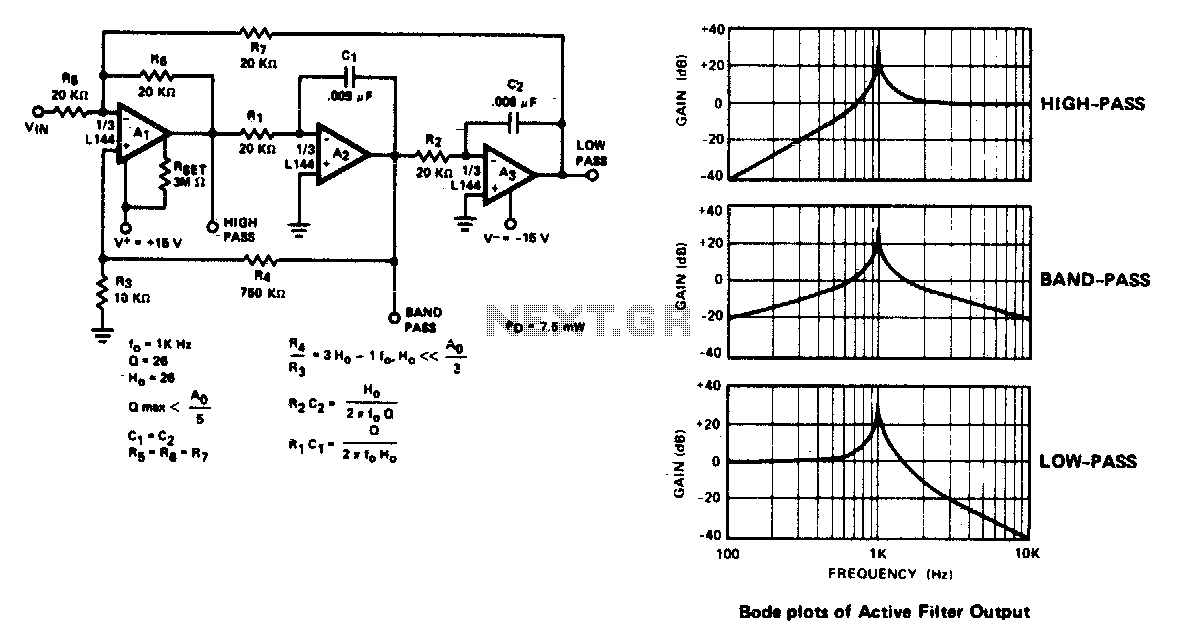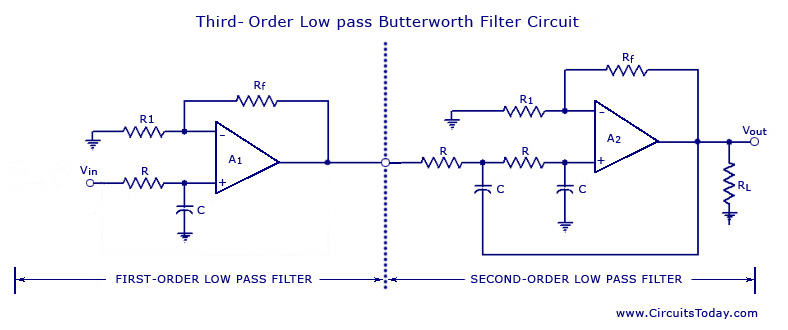
Low-pass filter

This nonlinear, passive filter circuit rejects ripple (or unwanted but fairly steady-voltage) without appreciably affecting the rise time of a signal. The circuit works best when the signal level is considerably lower than the unwanted ripple, provided the ripple level is fairly constant. The circuit has characteristics similar to two peak-detecting sample-and-hold circuits in tandem with a voltage averager.
This nonlinear passive filter circuit is designed to effectively attenuate ripple voltage, which is defined as unwanted steady-state voltage fluctuations, while maintaining the integrity of the signal's rise time. The performance of this circuit is optimized when the amplitude of the desired signal is significantly lower than that of the ripple, ensuring that the filter can differentiate between the two without introducing distortion to the signal.
The architecture of the circuit can be conceptualized as comprising two peak-detecting sample-and-hold circuits arranged in series, coupled with a voltage averaging mechanism. This configuration allows for the detection of peak voltage levels of the ripple and the subsequent holding of these values, which are then averaged over time to produce a smoothed output.
The nonlinear characteristics of the filter arise from the specific components used, which may include diodes, capacitors, and resistors. The diodes function to rectify the incoming signal, allowing only the positive or negative peaks to be captured, while the capacitors serve to store these peak values momentarily. The resistors are critical in determining the time constants of the sample-and-hold operation as well as the averaging process, thereby influencing the overall response time and effectiveness of the filter.
In practical applications, this type of circuit is particularly useful in environments where signal integrity is paramount, such as in audio processing systems, communication devices, and power supply regulation. The ability to reject unwanted ripple while preserving the rise time of the desired signal makes this filter an essential component in various electronic systems where precision and clarity are required.This nonlinear, passive filter circuit rejects ripple (or unwanted but fairly steady-voltage) without appreciably affecting the rise time of a signal. The circuit works best when the signal level is considerably lower than the unwanted ripple, provided the ripple level is fairly constant
The circuit has characteristics similar to two peak-detecting sample-and-hold circuits in tandem with a voltage averager.
This nonlinear passive filter circuit is designed to effectively attenuate ripple voltage, which is defined as unwanted steady-state voltage fluctuations, while maintaining the integrity of the signal's rise time. The performance of this circuit is optimized when the amplitude of the desired signal is significantly lower than that of the ripple, ensuring that the filter can differentiate between the two without introducing distortion to the signal.
The architecture of the circuit can be conceptualized as comprising two peak-detecting sample-and-hold circuits arranged in series, coupled with a voltage averaging mechanism. This configuration allows for the detection of peak voltage levels of the ripple and the subsequent holding of these values, which are then averaged over time to produce a smoothed output.
The nonlinear characteristics of the filter arise from the specific components used, which may include diodes, capacitors, and resistors. The diodes function to rectify the incoming signal, allowing only the positive or negative peaks to be captured, while the capacitors serve to store these peak values momentarily. The resistors are critical in determining the time constants of the sample-and-hold operation as well as the averaging process, thereby influencing the overall response time and effectiveness of the filter.
In practical applications, this type of circuit is particularly useful in environments where signal integrity is paramount, such as in audio processing systems, communication devices, and power supply regulation. The ability to reject unwanted ripple while preserving the rise time of the desired signal makes this filter an essential component in various electronic systems where precision and clarity are required.This nonlinear, passive filter circuit rejects ripple (or unwanted but fairly steady-voltage) without appreciably affecting the rise time of a signal. The circuit works best when the signal level is considerably lower than the unwanted ripple, provided the ripple level is fairly constant
The circuit has characteristics similar to two peak-detecting sample-and-hold circuits in tandem with a voltage averager.
